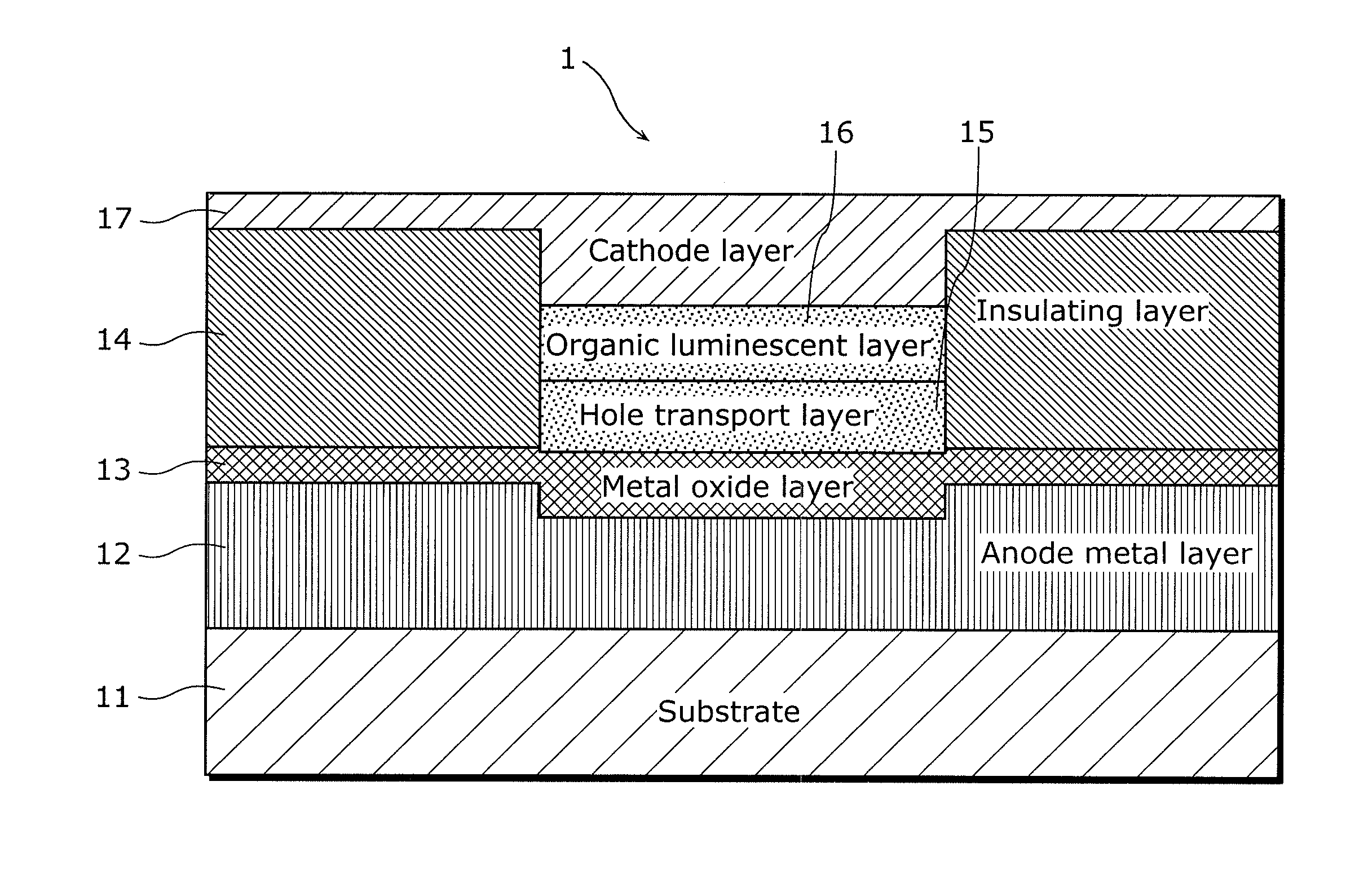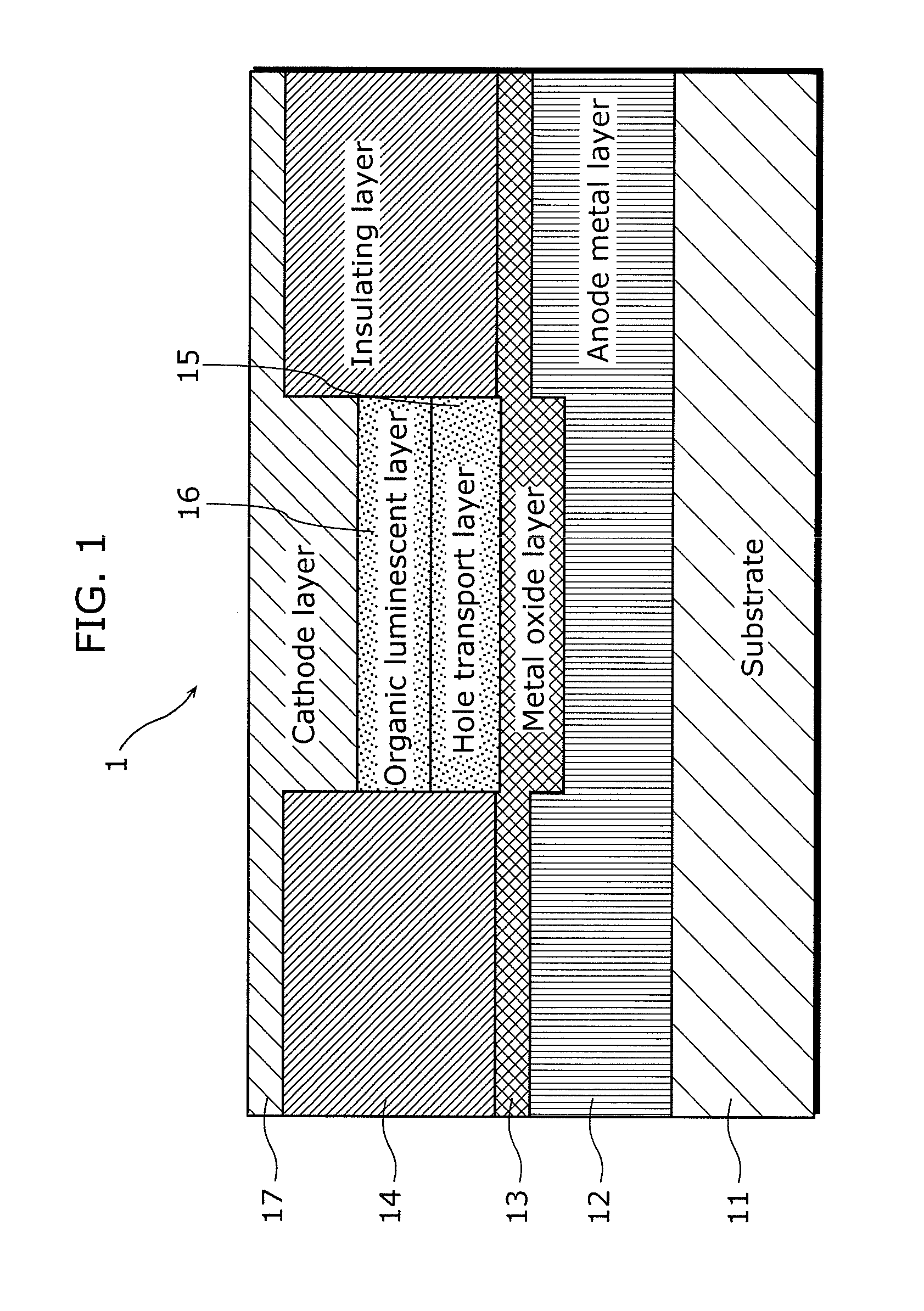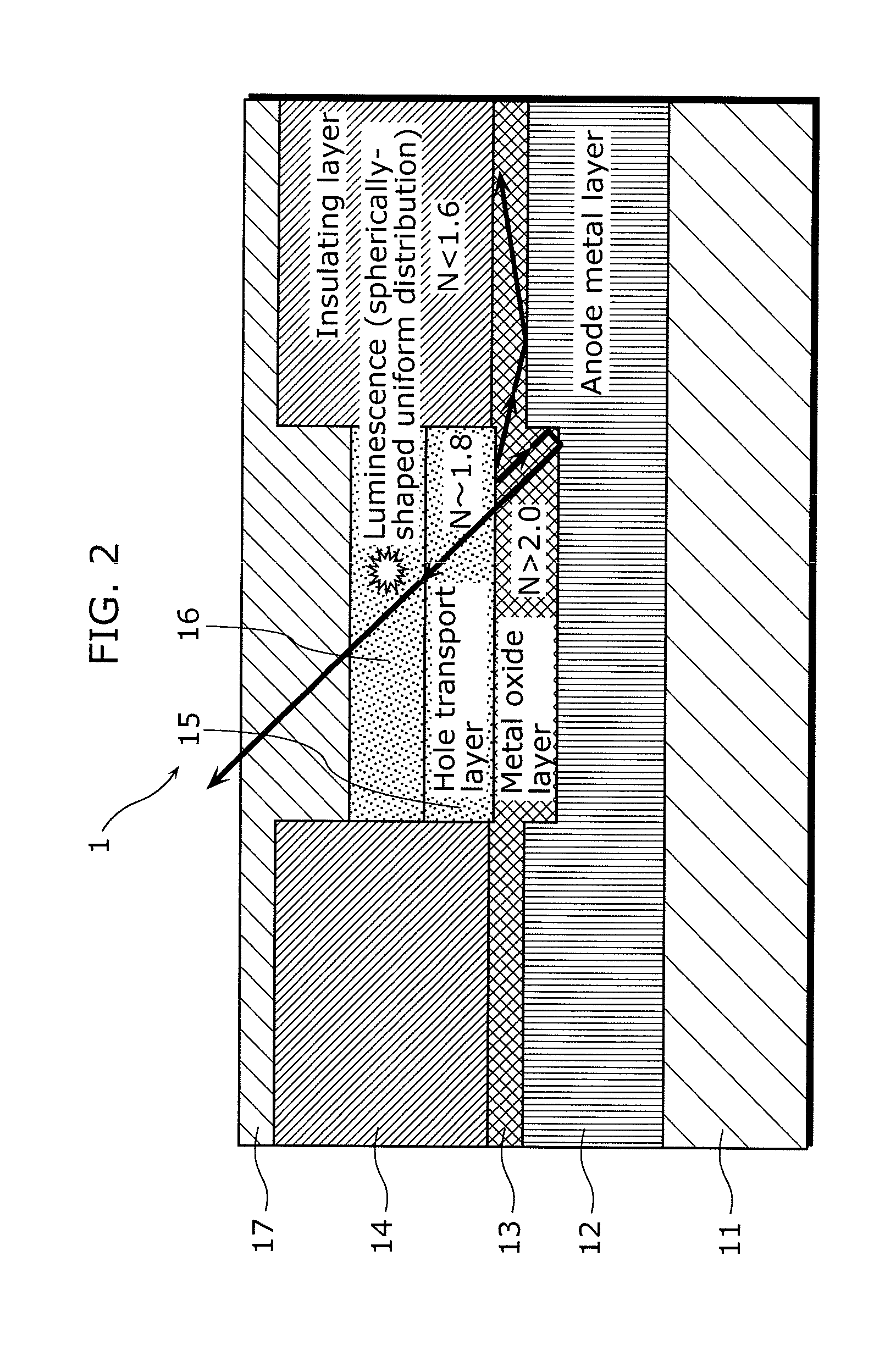Organic electroluminescence element and manufacturing method thereof
a technology of electroluminescence elements and manufacturing methods, applied in the direction of basic electric elements, electrical apparatus, semiconductor devices, etc., to achieve the effects of excellent power consumption and driving life, reduced number of organic layers, and remarkable hole injection properties
- Summary
- Abstract
- Description
- Claims
- Application Information
AI Technical Summary
Benefits of technology
Problems solved by technology
Method used
Image
Examples
embodiment 1
[0072]An organic electroluminescence element (hereinafter referred to as an organic EL element) according to this embodiment includes: an anode metal layer formed on a substrate; an insulating layer formed on the anode metal layer in a first region; a metal oxide layer formed on the anode metal layer, in the first region and a second region; a hole transport layer formed on the metal oxide layer in the second region where the insulating layer is not formed; an organic luminescent layer formed on the hole transport layer; and a cathode layer formed on the organic luminescent layer, in which an upper surface of the anode metal layer in the second region is located below an upper surface of the anode metal layer in the first region. This allows forming an organic layer that has superior hole injection property by wet printing and capable of reducing the number of organic layers.
[0073]The following specifically describes specific description of Embodiment 1 of the organic EL element acc...
example 1
[0125]FIG. 4 is a process chart describing a manufacturing method of an organic EL element according to Embodiment 1 of the present invention.
[0126]First, on the surface of a glass substrate 111 (using non-soda glass manufactured by Matsunami Glass Ind. Ltd.), an anode 123 having the thickness of 100 nm and made of 97% molybdenum and 3% chrome (hereinafter may be referred to as Mo:Cr (97:3)) was formed by sputtering Subsequently, after patterning the anode 123 by photolithography using photosensitive resist and etching and after delamination of the photosensitive resist patterns, patterning of the anode 123 into a predetermined shape of anode was performed.
[0127]A mixture of phosphoric acid, nitric acid, and acetic acid was used as an etchant.
[0128]After forming the anode 123 and before forming an insulating layer, the uppermost surface of the anode 123 is naturally oxidized, forming the surface oxidation film 131. Note that, as described earlier, there is a case where the surface o...
example 2
[0137]The organic EL element in Example 2 according to the present invention was formed in the same manner as Example 1, except that the cathode layer 171 in FIG. 4 is formed to have 5 nm of barium and 10 nm of silver (manufactured by Aldrich, purity 99.9%), and 80 nm of lithium fluoride was formed as a refractive index adjusting layer.
PUM
| Property | Measurement | Unit |
|---|---|---|
| reflectivity | aaaaa | aaaaa |
| thickness | aaaaa | aaaaa |
| visible light reflectivity | aaaaa | aaaaa |
Abstract
Description
Claims
Application Information
 Login to View More
Login to View More - R&D
- Intellectual Property
- Life Sciences
- Materials
- Tech Scout
- Unparalleled Data Quality
- Higher Quality Content
- 60% Fewer Hallucinations
Browse by: Latest US Patents, China's latest patents, Technical Efficacy Thesaurus, Application Domain, Technology Topic, Popular Technical Reports.
© 2025 PatSnap. All rights reserved.Legal|Privacy policy|Modern Slavery Act Transparency Statement|Sitemap|About US| Contact US: help@patsnap.com



